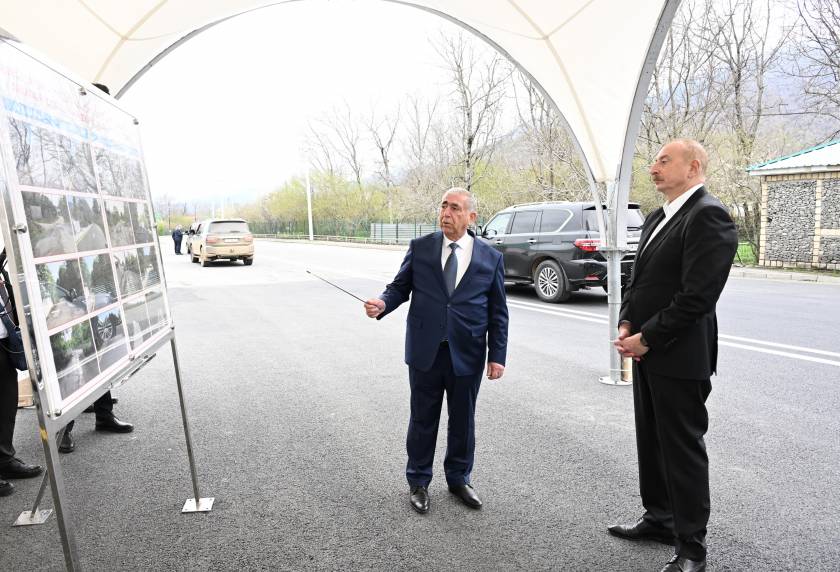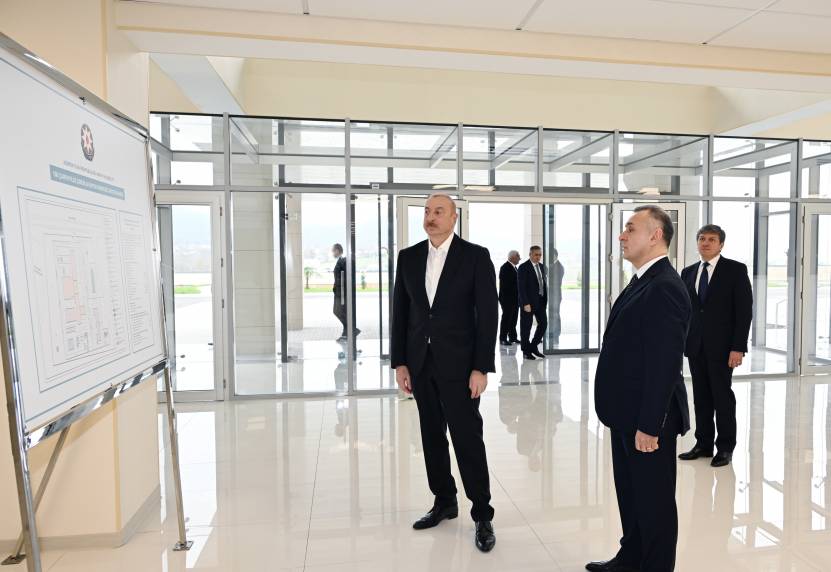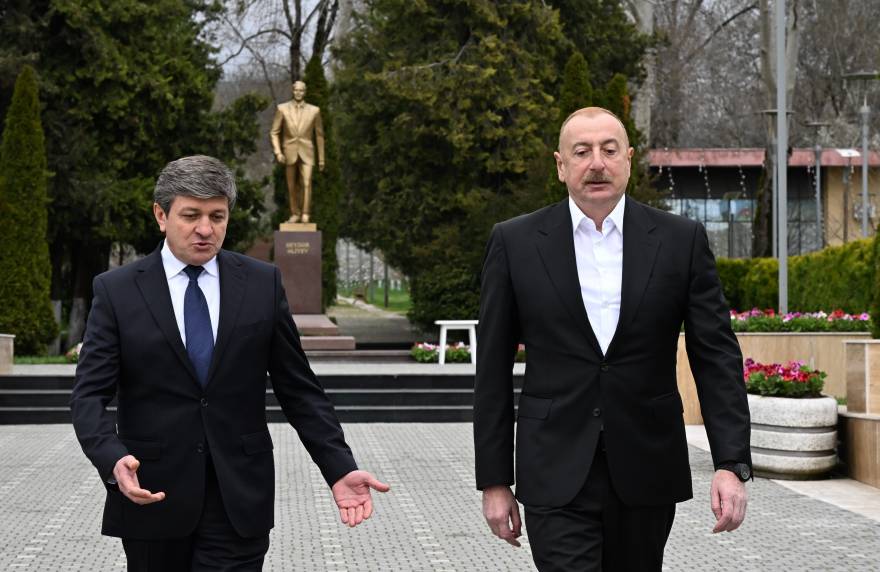10:16

Daily Times
Wednesday, February 16, 2011
SAEED MINHAS
ISLAMABAD: Deciphering between historical fact and fiction sometimes proves nearly impossible, especially when you land in a situation where tempers are not only politically charged but both parties are trying to bulldoze each other through sheer power of propaganda for strategic and religious reasons.
One such example sprang up when I was going through the history of Prophet Noah’s Ark, the mess the collapse of the USSR has generated, how the USSR was playing with history while in charge of the Caucasus during its century-old iron fisted rule and how it tried to turn a Muslim-dominated land of Azerbaijan into a Christian-dominated Armenian one by giving them fabricated historical grounds of religion just to ensure that they have a strategic edge over the Turkish and Iranian states. I was also wondering how come the Armenians, who actually had a state sometime back in the Turkish lands of Anatolia, ended up in the Caucasus and how Armenians living in Iran and other neighbouring Gulf countries were drafted in to swell their presence from a mere thousand to several hundred thousand before, during and after the Bolshevik revolution. In this context a complete deluge during Noah’s time — which is accepted by all the holy scriptures and even by modern scientists — has become an interesting read because that was brought up by the Russian Czars to divide and rule the Azeri-dominated lands and give the Armenians a reason to form their idea of a Greater Armenia by importing all their expats from across the world. Doesn’t it remind us of the ‘manufacture’ of the Israeli state?
If historical data is anything to go by, then let me delve into this controversy with some facts gathered from all possible available sources to prove that the Armenian claims seem not only fabricated but also far fetched, because neither was there any concept of an Armenian empire in the Caucasus nor can they claim to be original sons of the soil. So let’s have a look at the facts and then decide for ourselves what history transpires outside the politically charged atmosphere, how Prophet Noah became part of the whole debate and how the former USSR engineered all of this mess, which still remains a cause of concern for the region because Azeris and Armenians have already fought a bloody war between themselves and the chances of another one cannot be ruled out.
Armenian legends ascribe the foundation of Erevan to Noah, deriving the name of the city from the exclamation “Erevants!” (meaning “It showed up”), ostensibly made by Noah when the top of the Ararat mountain rose from the water. This is considered an example of so-called people’s etymology. Thereby, according to Armenian legends of the late 19th century, Erevan is the first and therefore the most ancient town on the earth after the Deluge. In addition to that, Noah was of Armenian origin and by exclaiming “Erevants!” Noah accidentally exposed his nationality. In this way, Armenians forged their own false history and culture, depicting it as a chronicle of the “ancient Armenian empire”.
Deliberate attempts made by Armenian historians to counterfeit the emergence of Erevan were not successful until 1950. In 1950, Soviet-Armenian archeologists found a stone flag at the foot of the Arin-Berd hill, according to which Erebuni (nowadays close to Erevan) was founded by the king of Urartu, Argishti I.
Decoded inscriptions alleged that the castle of Erebuni was founded in 782 BC. The whole of Armenia was rejoicing over the find and it served as the basis for the Armenian leadership to observe the 2,750th anniversary of Erevan in 1968. Since then, each year on 10th October, a political and historical show is being organized dedicated to the foundation of Erevan.
Despite the fact that only three letters: (there were no vowels in ancient times) were mentioned on an inscription, it was immediately decoded as Erebuni. Besides, there was no mention in respect of the geographical location of the town of the name of . However, it is not clear what relation Urartu has to Armenia. At that time, the Armenians were in search of their historical motherland and did not dwell in the Caucasus.
Referring to the aforementioned strange story, researcher Shnirelman wrote: “Despite all, there was no direct link between the archeological find and the celebrations (in Soviet Armenia) which took place later. In fact, the vivid festivities were organized by the Armenian authorities and not by archeologists... . What linkage existed between the capital of Armenia and Urartuan Castle, and the alleged relationship with the Armenians needed to be proved. To answer the questions put above is not going to be difficult for someone familiar with the modern history of Armenia.”
That means, had not there been a wrongly decoded archeological find, the Armenians would never know that their ‘native’ Erevan is 2,800 years old. In reality, according to historical facts, Iravan was founded at the beginning of the 16th century as a forward base by Shah Ismail of the Azerbaijani Safavid Empire along the border with the Ottoman Empire. In order to prevent the advance of adversary troops towards the East, Shah Ismail I in 1515 ordered to construct a castle next to the River Zengi. Revan-Khuli Khan was entrusted with the task. The name of the castle, Revan-kala (meaning Revan’s castle) originates from his name and consequently became Revan and then Irevan.
Later, during the decline of the Safavid Empire (middle of the 18th century) more than 20 independent Azeri khanates (territory ruled by a khan) came into existence. One of them was the Iravan Khanate, which lasted until the Russian invasion of the region and the capture of Iravan at the beginning of the 19th century.
Immediately, after the Turkmenchay Treaty (between Russia and Iran) Czar Nicolai I issued a decree on March 21, 1828, according to which an ‘Armenian oblast’ was created, consisting of the lands of the Iravan and Nakhichevan khanates. At the time of its inclusion, the population of Iravan city comprised 7,331 Azeris and 2,369 Armenians. Since Azerbaijan’s occupation in 1828, Armenians were resettled from Iran, totalling 50,000, and from Turkey totalling 90,000 in Azerbaijani lands — the khanates of Irevan (now Yerevan), Karabakh and Nakhchivan.
A Russian envoy at that time, A. Griboedov, noted in one of his official letters in 1828: “It is necessary to resettle Armenians from the regions occupied by the Russian Army that are Tebriz, Khoy, Salmas, Maragha to Nakhichevan, Yerevan and Karabakh.” Writer N. Shavrov wrote in 1911: “To date, 1,000,000 out of the 1,300,000 Armenian people of Transcaucasia are not aboriginal inhabitants.”
At the end of the 19th century, Iravan province was the third largest province in respect of the number of Azeri population after Baku and Yelizavetpol (Russian imposed name for the second largest city in Azerbaijan — Gandja) provinces. According to the first census conducted in the Russian Empire in 1897, the number of Azeris living in Iravan province was 313,178. Subsequent events of the beginning of the 20th century revealed altogether that this was the only cause for the continuation of the historical sufferings of the Azerbaijani people.
In another instance, between 1886 and 1897, the total population increase was 40,000, while growth during 1905-1916 was only 17,000 despite the fact that the population increase in 1905 in comparison with 1886 was more than 61,000. These facts indicate a jingoistic policy undertaken by the Armenian nationalists during the reign of Tsarist Russia and are indicative of the realisation of concrete plans directed at expelling the Azeris from their historical lands and the creation of an ‘Armenia without Turks’, as they call the Azeri.
Taking advantage of the situation in Russia after World War I and the 1917 October Revolution, Armenians started to fulfil their plans under the banner of Bolshevism. Under the counter-revolution slogan, the Baku Commune, comprising many Armenians, in March 1918 started the realisation of their criminal aim of the extermination of the Azeris throughout Iravan province. Crimes committed by the Armenians at that time have been imprinted in the memory of the Azeri population. Nationality was the only reason to annihilate thousands of peaceable Azeri. They set fire to houses, burnt people alive. Architectural treasures, schools, hospitals and mosques, all were ruined.
In 1918-1920, during the mass extermination, out of 575,000 Azeri living in the territory of contemporary Armenia, 565,000 were either murdered or expelled. These facts are even proved by Armenian sources: “When Dashnags (nationalistic movement) were overthrown in 1920, the number of Azeri population in Soviet Armenia did not exceed 10,000. In 1922, after the return of 60,000 Azeri refugees, their population reached 72,596.”
During the Soviet era, Armenians continued their traditional method of expelling the Azeri from the Armenian SSR and extension of their lands at the expense of the neighbours. For this purpose, Armenians living both in Armenia and abroad showed conformity of actions, which was an indication of the existence of the absurd idea of ‘Greater Armenia’.
Taking advantage of the Tehran conference in 1943, the Armenian Diaspora appealed to B. Molotov, Minister of Foreign Affairs, USSR, to allow resettlement of Iranian Armenians in Soviet Armenia. Stalin’s approval on the issue in fact laid the foundations of the 1948-1953 mass deportation of Azeris from Armenia.
In 1945, the Armenian leadership raised the issue of the annexation of Nagorno-Karabakh to Armenia, substantiating it with economic reasons, but failed. Afterward, they chose another tactic. Immediately after the end of World War II, the resettlement process of Armenians from abroad started. In 1946, 50,900 people were relocated to Armenia from Syria, Greece, Lebanon, Iran, Bulgaria and Romania. In 1947, 35,400 from Palestine, Syria, France, USA, Greece, Egypt, Iraq and Lebanon were relocated. In 1947, the First Secretary of the Central Committee of Armenia, referring to the difficulties of the settlement of relocated people proposed a cynical idea meant to relocate Azeris to the cotton cultivating areas of Azerbaijan, ostensibly to increase labour production.
According to archives, the number of Azeris deported in 1948 were 2,357 families (11,046 people), in 1949, 2,368 families (10,595 people), in 1950, 14,361 people. Out of 8,110 families, only 4,878 were provided housing. In total, 100,000 Azeris were deported between 1948 and 1952. Used to living in mountainous areas and not provided with housing, people could barely survive the harsh climate of the lowlands and many of them starved to death.
Even in such conditions, multiple appeals made by relocated people and the Azerbaijani leadership to the Moscow authorities to allow them to settle in mountainous regions, including Karabakh, were categorically refused. That is another instance of voluntary relocation of people in the name of cotton productivity; in fact a blanket term that stood for inhumanity and criminal negligence to human destiny.
Armenia, with its policy of survival, actually became a single nation state and the Dashnag’s idea of ‘Armenia without Azeris’ became a reality. As is stated by the makers of Armenian history, in former times Iravan, nowadays Erevan, is the “twelfth capital of Armenia”. On October 10, 2010, the Armenians observed the 2,792nd anniversary of Erevan. Despite its ancient age, one wouldn’t call it an ‘oldster’ because, in reality, even the oldest Armenian city has no history more than 100 years. After all said and done, let’s ask ourselves: Do Armenians have the right to call Erevan, the final “capital of Armenia”?
Link to article

Aleksandar Vučić, President of the Republic of Serbia, made a phone call to the President of the Republic of Azerbaijan Ilham Aliyev, on April 16, briefing him on the pressures Serbia has been encountering recently and requesting the support of the friendly...
16 April 2024, 20:36Dear Mr. Pellegrini,
I sincerely congratulate you on your election as the President of the Slovak Republic.
The development of friendly relations with Slovakia holds great significance for us. Currently, there are good opportunities for enriching the...
15 April 2024, 13:06Prime Minister Muhammad Shehbaz Sharif of the Islamic Republic of Pakistan made a phone call to President Ilham Aliyev of the Republic of Azerbaijan on April 9.
Pakistan's Prime Minister congratulated the head of state on the occasion of Eid al-Fitr and wished...
09 April 2024, 19:52


On April 9, President Recep Tayyip Erdogan of the Republic of Türkiye made a phone call to President Ilham Aliyev of the Republic of Azerbaijan.
The President of Türkiye congratulated President Ilham Aliyev on the occasion of Eid al-Fitr and wished the people of...
09 April 2024, 15:39

President of the Republic of Azerbaijan Ilham Aliyev has toured the Qabala district.
The head of state visited the monument to National Leader Heydar Aliyev erected in the city of Qabala and participated in the opening ceremonies of the 110/35/10 kV "Hajialili"...
09 April 2024, 15:14